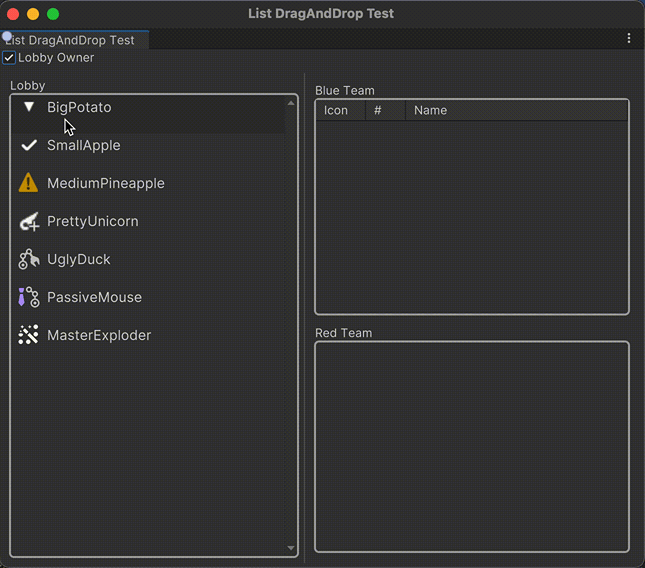The Convergence of Titans: How Java is Supercharging the Low-Code Revolution
For years, the application development landscape has been bifurcated into two distinct camps: the “pro-code” world of professional developers, wielding powerful languages like Java to build robust, scalable, and secure enterprise systems, and the “low-code/no-code” (LCNC) world of citizen developers, using visual drag-and-drop interfaces to rapidly assemble business applications. These worlds rarely intersected. Pro-code was seen as too slow for rapid business needs, while LCNC was often dismissed as too limited for complex, mission-critical tasks. However, the latest Java low-code news signals a seismic shift. Enterprise platforms are now aggressively integrating professional Java development directly into their low-code offerings, creating a powerful hybrid model. This fusion isn’t about replacing one paradigm with another; it’s about creating a collaborative ecosystem where the speed of low-code and the power of Java coexist. This synergy allows businesses to build applications faster without sacrificing the performance, security, and custom logic that only a mature ecosystem like Java can provide. This trend is a significant piece of the broader Java ecosystem news, highlighting the language’s enduring relevance and adaptability in the modern enterprise.
Core Concepts: Establishing the Pro-Code and Low-Code Contract
The successful integration of Java into a low-code platform hinges on a well-defined architecture and clear “contracts” between the two environments. The low-code platform excels at handling the user interface (UI), standard workflows, and basic data models. The pro-code Java component, on the other hand, is brought in to handle the “heavy lifting”: complex business rules, intensive data processing, and integrations with legacy or third-party systems that require custom protocols.
The Interface as the Bridge
The most fundamental concept in this hybrid model is the use of a Java interface as a formal contract. The low-code platform is configured to understand and invoke methods defined in this interface, while the Java developer provides one or more concrete implementations. This decouples the two worlds. The low-code application doesn’t need to know how a calculation is performed, only that it can pass specific inputs to a service and expect a specific output. This is a cornerstone principle of both good software design and the latest Jakarta EE news, emphasizing modular, service-oriented architecture.
Imagine a low-code application for processing insurance claims. The UI for data entry is built visually, but the complex, region-specific premium calculation needs the power of Java. The contract could be defined by the following interface:
package com.enterprise.lowcode.extensions;
import java.math.BigDecimal;
import java.util.Map;
/**
* Defines the contract for any premium calculation service that can be
* plugged into the low-code platform. The platform will provide the
* claim data as a map and expects a calculated premium in return.
*/
public interface PremiumCalculator {
/**
* Calculates the insurance premium based on provided claim data.
*
* @param claimData A map containing key-value pairs of claim information
* (e.g., "age", "vehicleType", "driverHistory").
* @return The calculated premium as a BigDecimal for precision.
* @throws CalculationException if the input data is invalid or a calculation
* error occurs.
*/
BigDecimal calculatePremium(Map<String, Object> claimData) throws CalculationException;
}
// Custom exception for clear error handling
class CalculationException extends Exception {
public CalculationException(String message) {
super(message);
}
}
This interface is simple, clear, and acts as the immutable bridge between the visually-built front end and the powerful Java backend. The low-code developer simply configures a button to invoke the calculatePremium service, passing the form data as the map.
Practical Implementation: Building a Spring Boot Extension
With the contract defined, a professional Java developer can build a robust implementation using familiar tools and frameworks. The Spring Boot news is particularly relevant here, as its convention-over-configuration approach makes it incredibly easy to create standalone, production-grade microservices that can serve as the pro-code backend for a low-code application.

Implementing the Business Logic with Modern Java
Let’s implement the PremiumCalculator interface. Our service will calculate a vehicle insurance premium. The logic will involve a base rate, adjustments based on driver age, and a risk factor derived from a list of past incidents. This is a perfect opportunity to showcase modern Java features, reflecting the latest in Java 17 news and Java 21 news, such as the Stream API for clean data processing.
The implementation, packaged as a Spring Boot service, might look like this:
package com.enterprise.procode.service;
import com.enterprise.lowcode.extensions.CalculationException;
import com.enterprise.lowcode.extensions.PremiumCalculator;
import org.springframework.stereotype.Service;
import java.math.BigDecimal;
import java.math.RoundingMode;
import java.util.List;
import java.util.Map;
@Service("DefaultVehiclePremiumCalculator")
public class VehiclePremiumCalculatorImpl implements PremiumCalculator {
private static final BigDecimal BASE_PREMIUM = new BigDecimal("500.00");
private static final int AGE_THRESHOLD = 25;
private static final BigDecimal YOUNG_DRIVER_SURCHARGE = new BigDecimal("1.25");
@Override
public BigDecimal calculatePremium(Map<String, Object> claimData) throws CalculationException {
try {
int age = (Integer) claimData.get("age");
List<Integer> incidentSeverities = (List<Integer>) claimData.getOrDefault("incidentSeverities", List.of());
BigDecimal premium = BASE_PREMIUM;
// Apply age-based surcharge
if (age < AGE_THRESHOLD) {
premium = premium.multiply(YOUNG_DRIVER_SURCHARGE);
}
// Use Java Streams to calculate a risk factor from past incidents
// A higher severity score leads to a higher risk factor.
double riskFactor = incidentSeverities.stream()
.mapToDouble(severity -> 1.0 + (severity / 10.0)) // e.g., severity 5 -> 1.5x multiplier
.reduce(1.0, (a, b) -> a * b); // Compound the multipliers
premium = premium.multiply(BigDecimal.valueOf(riskFactor));
return premium.setScale(2, RoundingMode.HALF_UP);
} catch (ClassCastException | NullPointerException e) {
// Handle malformed data from the low-code platform
throw new CalculationException("Invalid or missing data in claim map: " + e.getMessage());
}
}
}
Packaging and Deployment with Maven or Gradle
This Spring Boot application would be packaged into an executable JAR file using build tools like Maven or Gradle. The latest Maven news and Gradle news revolve around improved dependency management and faster build times, which are critical for an efficient CI/CD pipeline. Once packaged, the service can be deployed as a Docker container to a cloud platform. The low-code environment is then configured with the URL of this service’s REST endpoint. This separation ensures that the Java component can be updated, scaled, and maintained independently of the front-end application, a key tenet of microservices architecture.
Advanced Techniques: Concurrency, AI, and Asynchronous Operations
The real power of this hybrid model becomes apparent when tackling advanced challenges that are often insurmountable for pure LCNC platforms. Topics like high concurrency and AI integration are where Java truly shines, especially with recent innovations in the OpenJDK.
Unlocking Concurrency with Project Loom
A common low-code pain point is handling long-running, I/O-bound tasks, such as calling multiple external APIs to gather data. A traditional approach would block threads, quickly exhausting server resources. The latest Project Loom news provides a revolutionary solution: virtual threads. Virtual threads are lightweight, managed by the JVM, and allow developers to write simple, synchronous-looking code that executes with massive concurrency.
Imagine our premium calculator needs to fetch data from three external services (DMV records, credit score, and previous insurer) simultaneously. Using virtual threads, this becomes trivial and highly performant.
package com.enterprise.procode.service;
import java.net.URI;
import java.net.http.HttpClient;
import java.net.http.HttpRequest;
import java.net.http.HttpResponse;
import java.util.List;
import java.util.concurrent.Executors;
import java.util.concurrent.Future;
import java.util.stream.Collectors;
public class ExternalDataAggregator {
// As of Java 21, HttpClient is a standard, powerful library
private final HttpClient client = HttpClient.newHttpClient();
public String fetchAllDataConcurrently(String driverId) throws Exception {
// Use the new virtual thread per task executor
try (var executor = Executors.newVirtualThreadPerTaskExecutor()) {
List<Future<String>> futures = List.of(
executor.submit(() -> fetchData("https://api.dmv.gov/records/" + driverId)),
executor.submit(() -> fetchData("https://api.creditbureau.com/score/" + driverId)),
executor.submit(() -> fetchData("https://api.previousinsurer.com/history/" + driverId))
);
// Collect results as they complete
return futures.stream()
.map(future -> {
try {
return future.get(); // This blocks only the virtual thread, not the OS thread
} catch (Exception e) {
return "Error: " + e.getMessage();
}
})
.collect(Collectors.joining("\n"));
}
}
private String fetchData(String url) throws Exception {
HttpRequest request = HttpRequest.newBuilder()
.uri(URI.create(url))
.build();
// This network call will not block an expensive OS thread
HttpResponse<String> response = client.send(request, HttpResponse.BodyHandlers.ofString());
return response.body();
}
}
This code, a highlight of the recent Java virtual threads news, allows the low-code platform to trigger a single, powerful Java method that efficiently orchestrates multiple network calls without consuming precious system resources.

Integrating AI with LangChain4j and Spring AI
Another exciting frontier is Artificial Intelligence. The latest Spring AI news and the emergence of libraries like LangChain4j make it easier than ever to integrate Large Language Models (LLMs) into Java applications. A low-code app could collect customer feedback, and a Java backend could use an LLM to perform sentiment analysis, summarize the text, and categorize the issue—tasks far beyond the scope of typical LCNC tools.
Best Practices, Governance, and Optimization
To ensure a successful and maintainable hybrid system, it’s crucial to follow best practices for governance, testing, and security.
Establish Clear Boundaries and Governance
The most common pitfall is a lack of clear boundaries, leading to “spaghetti architecture” where logic is scattered randomly between the two platforms. A strong governance model is essential:
- Low-Code: Responsible for UI/UX, presentation logic, simple data validation, and orchestrating calls to pro-code services.
- Pro-Code (Java): Responsible for complex business rules, algorithms, data transformations, integrations with external systems, and security-sensitive operations.
The Java interface serves as the enforced boundary. One of the most useful Java wisdom tips news is to treat these interfaces as public APIs, documenting them thoroughly and versioning them carefully.

Rigorous Testing and CI/CD
The Java components must be treated as first-class enterprise applications. This means they require a dedicated CI/CD pipeline and a comprehensive test suite. The latest JUnit news (with JUnit 5) and Mockito news provide powerful tools for writing unit, integration, and mock tests to ensure the Java code is reliable and correct before it’s ever called by the low-code platform.
Security is Paramount
The Java service is an extension of your application’s trust boundary and must be secured accordingly. This is a critical aspect of Java security news. Best practices include:
- Input Validation: Never trust data coming from the low-code platform. Sanitize and validate all inputs within the Java service.
- Authentication & Authorization: Secure the API endpoints of the Java service using robust frameworks like Spring Security to ensure only the low-code platform can invoke them.
- Dependency Scanning: Regularly scan your Java project’s dependencies (managed by Maven or Gradle) for known vulnerabilities using tools like OWASP Dependency-Check.
Conclusion: A New Era of Collaborative Development
The integration of Java into low-code platforms represents a significant evolution in enterprise software development. It’s not a zero-sum game but a powerful combination that leverages the best of both worlds. This trend empowers “fusion teams” where citizen developers can rapidly build user-facing applications, while professional Java developers can focus on creating the complex, secure, and high-performance backend logic that truly differentiates the business. By using Java, organizations can break through the scalability and complexity ceilings of pure LCNC, all while relying on a mature, secure, and endlessly innovative platform backed by the entire OpenJDK community, from Oracle Java and Amazon Corretto to Adoptium and Azul Zulu. As this convergence accelerates, the ability to write clean, modern, and extensible Java components will become an even more valuable skill, ensuring Java’s central role in the enterprise for years to come.

